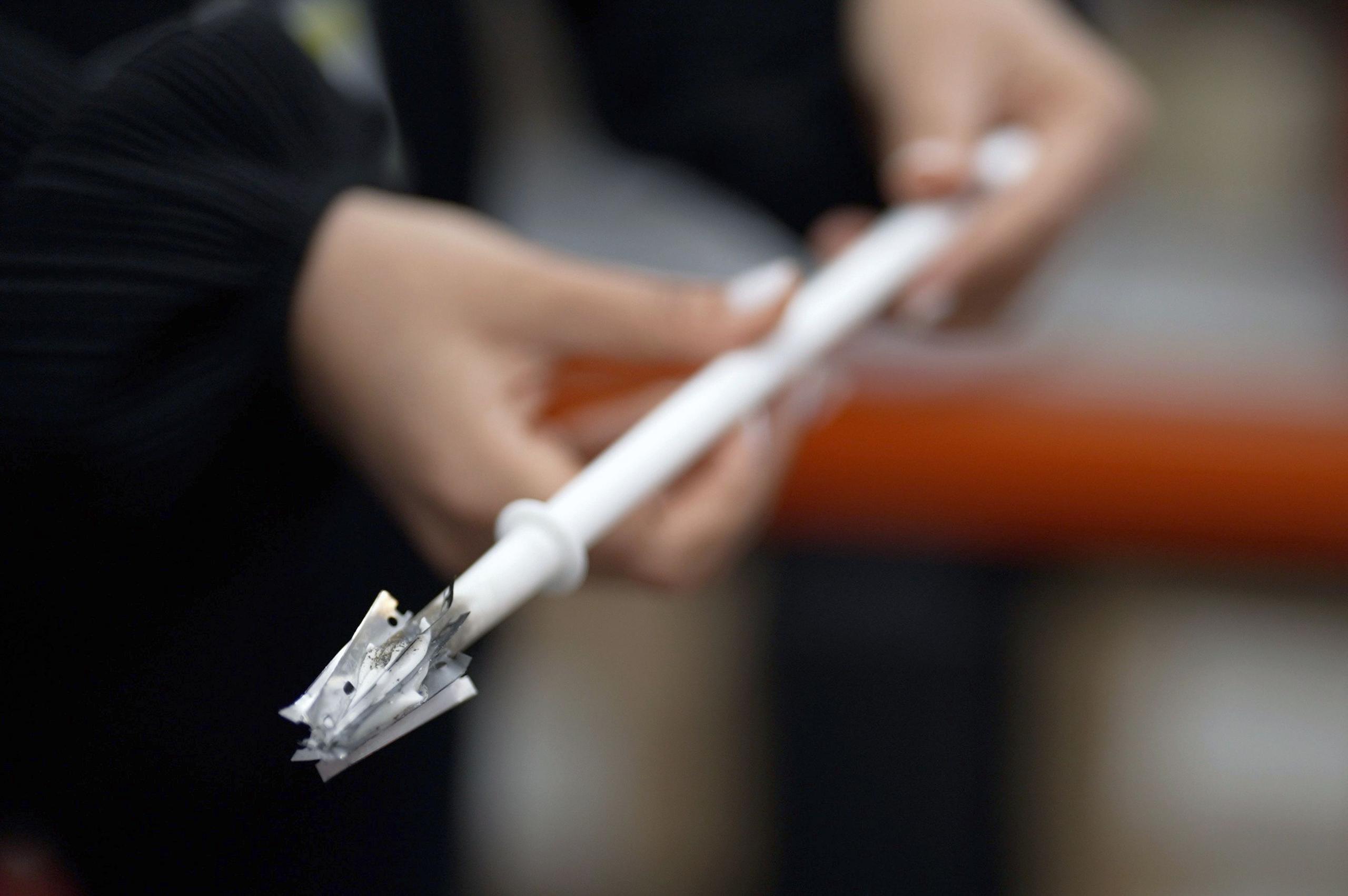
Outside the security barrier at HMP Belmarsh in south-east London, a man pulls up his black T-shirt to show us his scars.
“I’ve been stabbed by gangs – look at this,” he says. “And these are gunshot wounds, also from gangs. Man, it’s crazy – I could have died.”
A thick line marks a healed cut from just under the man’s neck all the way down to his navel. On his chest, the bullet wounds are circular and protruding.
He won’t give us his name or explain exactly what happened. He was in a gang when he was in prison, he says. And although he didn’t receive these injuries while inside, they were the work of a prison gang – operating on the outside.
“If I talk to you, I’m in trouble – so I can’t,” he says. He appears to be in his 20s or early 30s, and speaks quietly. “It’s brutal in jail. You’re either in or out with the gangs – and it’s better to be in, or you’re done for when you get out.”
BBC News spent two days outside London’s HMP Belmarsh and HMP Isis speaking to people visiting and others being released to gauge how gangs in jails are operating.
Overcrowding is making it increasingly difficult to keep rival groups apart in prisons. In September, the government released more than 1,700 offenders early, in a controversial scheme aimed at easing the overwhelming pressure on the prison system.
Two men visiting a relative at HMP Isis – a category C prison housing young offenders aged between 18 and 21 – are unambiguous when asked if their family member has experienced any gang violence.
“He’s had his face slashed and his throat slashed,” one tells us. “He hasn’t been out of his cell for two days because there’s been eight stabbings on the wing.”
“It’s the Wild West in there,” the other says. “The stabbings that go on, the drugs… It’s ridiculous – it’s all through the gangs.”
Inside every prison there’s a panel of unpaid volunteers who report on whether inmates are being treated fairly and given the support they need to turn their lives around.
The most recent Independent Monitoring Board (IMB) report on HMP Isis – which currently has about 600 inmates – says there are around 136 active gangs in the prison, with about half of all inmates having a gang affiliation. There are postcode gangs, drug gangs, and religious gangs.
The report says keeping opposing gangs apart is a challenge – which is being exacerbated by the increased mixing of prisoners.
According to the latest Inspectorate of Prisons report, there have been 294 assaults at Belmarsh in the last 12 months – 191 against prisoners and 103 against staff.

An inmate serving life for murder at another jail calls us from his illegal phone. He talks about the impact gangs have had on him while he’s been in custody. To protect his safety, we’re not naming him.
“I was vulnerable and pushed to be in a gang and then I was made to do all sorts for them,” he says. “Listen, I’ve chopped people, I’ve attacked staff, hiding phones and drugs… I’ve done the maddest things that I’ve not wanted to do, just for my safety.
“The prison officers let them get away with it because they’re just as scared.”
We’re on FaceTime and he shows me scars on his neck and arms, which he says are the result of not following the gang’s orders properly.
“They did this to me,” he says. “If you don’t do what they want? It’s over.
“I get people might think I deserve this, ‘cos of what I’ve done, but I’m sorry, and I should get rehabilitation and not this.”
The Prison Officers’ Association (POA) says overcrowding and lack of space is making it more challenging to keep gangs apart in prisons. In September, hundreds of convicts walked out of jails in England and Wales after serving 40% of their sentences, as part of the government’s early release scheme aimed at freeing up capacity.
This video can not be played
To play this video you need to enable JavaScript in your browser.
“Gang warfare is rife in many of our prisons,” says Steve Gillan, the POA’s general secretary. “Prison officers’ jobs are far more dangerous now than they were in the past. We know this from the horrendous, life-changing assaults on our members, and, indeed, the attacks on each other simply because they are in a different gang.”
According to official data, the number of assaults behind bars has increased over the last four years. In 2023, there were nearly 27,000 assaults in prisons in England and Wales – up 28% from the previous year.
-
-
Published2 October
-
“Gang rivalries are bitter,” a prison officer at HMP Isis tells us, speaking on condition of anonymity. “There are people who have been stabbed, shot, or lost their friends to violence, so they are forever seeking revenge on each other.”
In recent weeks gang members have had to be placed in parts of the prison with their “enemies”, the officer says – and that’s resulted in three razor attacks.
“Young men are now being placed on wings where they’re too scared to come out of their cells, and their rivals – who literally want to kill them – are coming to their doors to tell them this.”




The BBC was recently given exclusive access to HMP Pentonville, in London, a prison with more than 1,200 male inmates. We were shown weapons confiscated by staff that prisoners made or got hold of to inflict serious injury and murder.
We saw plastic toilet brushes and toothbrushes with razor blades melted into their ends, and heavy metal poles and mop handles. Other items commonly used as weapons include snooker balls placed in socks, and boiling water and oil.
“Prisoners are finding they need weapons more than they did in the past,” says Glenn Bartley, Pentonville’s security manager. He’s worked in prisons for more than 30 years. “They get scared and they fashion something to try and protect themselves, whether it be from gangs or individuals.”
More prisoners will be released early later this month – but there remain questions about how effective this controversial government scheme will be. In Scotland – the only part of the UK to publish official statistics so far – more than 10% of prisoners let out early are already back inside.
The Ministry of Justice (MoJ) told the BBC the new government inherited a prison system “on the brink of collapse”, and the recently introduced prisoner release scheme is “the first step toward rebuilding our justice system”.
The MoJ spokesperson added: “Violence and gangs are a scourge in our jails and the chronic overcrowding we are seeing has made it impossible for staff to deal with them effectively.
“Staff and the British public deserve better and this government will reform prisons to more effectively tackle gang activity and cut crime.”
If you are affected by any of the issues raised in this story, support and advice is available via the BBC Action Line.




Sign up for our morning newsletter and get BBC News in your inbox.
This post was originally published on this site be sure to check out more of their content.









